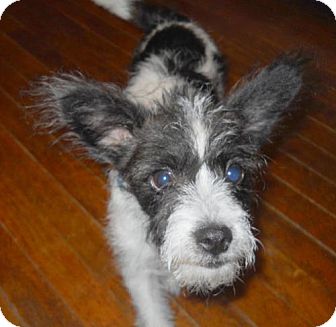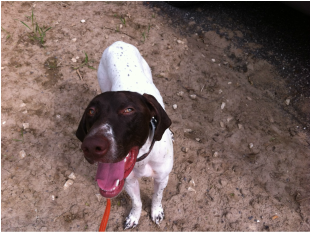In this article I will be using learning theory language. Positive and negative mean adding and subtracting respectivly. Therefore positive punshiment means the addition of a punisher and negative reinforcement means the removal of something unpleasant. Punishment means the behavior is decreased while reinforcement increases the desired behavior.
Call them what you would like; shock collars, training collars, electronic collars, e-collar. These collars work by administering a static shock to your dog with remote control. There are two main ways of using these tools, positive punishment and negative reinforcement. Understanding how and why these tools work is nessesary whether you are using them in your training or advocating against them. We also must understand that if these tools did not cause discomfort they would not work. Living being's behavior is dictated by two driving forces, we can work for something we want or avoid things that we don't. That's it. There is nothing that you do that isn't either enjoyable or you fear the consequences of not doing it. If you can think of anything, please post it in the comments.
The proper use of an e-collar requires introducing it at low levels, teaching the dog that they can turn off the sensation through their actions. This is the very definition of negative reinforcement.
Something else that controls through negative reinforcement is addiction. Having been a decade long smoker I can atest that being controlled through negative reinforcement is unpleasant. When a craving for a ciggarette hits it starts as a mild feeling of need. When you don't satisfy that need it grows into discomfort, this causes irritability and other side effects until you give in and take that first drag. There is a reason addition is called a monkey on your back. That first puff is so very satisfying. But why? Ciggarettes do not taste or smell good, there is certainly no health benefit of smoking them. The satisfaction comes from the relief of discomfort, this is also the definition of negative reinforcement.
Like smoking e-collars have side effects that are not apparent from the start. Like smoking the side effects are physical and mental. These side effects stew under the surface until they develop into full blown problems. With smoking we all know cancer is a real risk. With e-collars dogs can develop aggression, anxiety, and become increasingly fearful. Behavior problems are the number one cause of dealth for dogs in America, just as cancer is a leading cause of dealth in humans. The fallout is well documented, though not to the extent of the side effects of smoking.
E-collars work. That is not an issue that is up for debate. If they didn't work they would not have such wide spread use. The question is at what cost?
Call them what you would like; shock collars, training collars, electronic collars, e-collar. These collars work by administering a static shock to your dog with remote control. There are two main ways of using these tools, positive punishment and negative reinforcement. Understanding how and why these tools work is nessesary whether you are using them in your training or advocating against them. We also must understand that if these tools did not cause discomfort they would not work. Living being's behavior is dictated by two driving forces, we can work for something we want or avoid things that we don't. That's it. There is nothing that you do that isn't either enjoyable or you fear the consequences of not doing it. If you can think of anything, please post it in the comments.
The proper use of an e-collar requires introducing it at low levels, teaching the dog that they can turn off the sensation through their actions. This is the very definition of negative reinforcement.
Something else that controls through negative reinforcement is addiction. Having been a decade long smoker I can atest that being controlled through negative reinforcement is unpleasant. When a craving for a ciggarette hits it starts as a mild feeling of need. When you don't satisfy that need it grows into discomfort, this causes irritability and other side effects until you give in and take that first drag. There is a reason addition is called a monkey on your back. That first puff is so very satisfying. But why? Ciggarettes do not taste or smell good, there is certainly no health benefit of smoking them. The satisfaction comes from the relief of discomfort, this is also the definition of negative reinforcement.
Like smoking e-collars have side effects that are not apparent from the start. Like smoking the side effects are physical and mental. These side effects stew under the surface until they develop into full blown problems. With smoking we all know cancer is a real risk. With e-collars dogs can develop aggression, anxiety, and become increasingly fearful. Behavior problems are the number one cause of dealth for dogs in America, just as cancer is a leading cause of dealth in humans. The fallout is well documented, though not to the extent of the side effects of smoking.
E-collars work. That is not an issue that is up for debate. If they didn't work they would not have such wide spread use. The question is at what cost?



 RSS Feed
RSS Feed